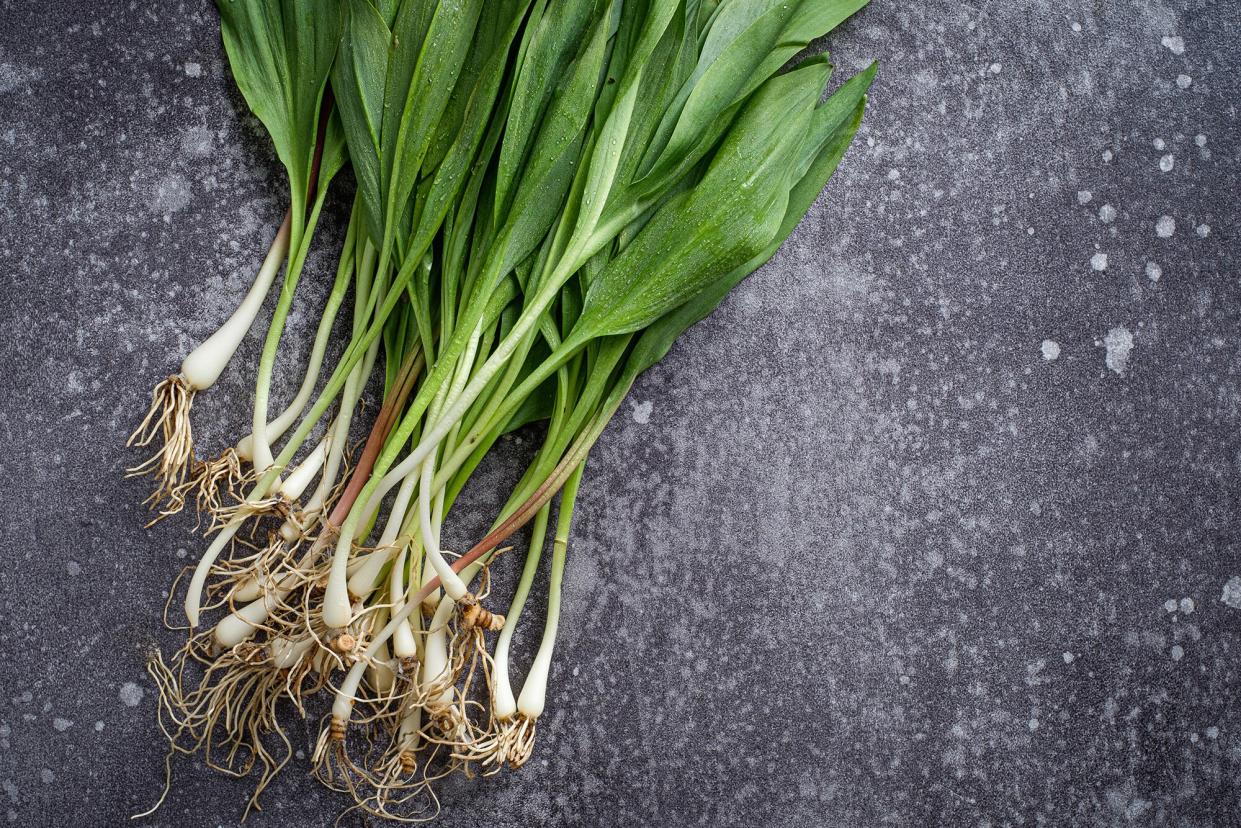Everything You Need to Know About Ramps

Photo by Huge Galdones / Food Styling by Christina Zerkis
Ramps are a type of wild allium that are related to spring onions and leeks and boast a pungent garlicky onion flavor. Sometimes called wild leeks, ramps grow in wooded areas and pop up in America throughout the Northeast, South and Midwest starting in April and ending in June, depending how chilly and wet the spring weather has been. Hunting for ramps is a favorite springtime activity for foragers who will often keep the locations of their favorite ramp sites a secret. When harvesting ramps, consider leaving some of the bulbs in the ground so they can grow back next year; ramp patches spread well if you leave a few bulbs behind. You can still harvest the leaves.
RELATED: Everything You Need to Know About Nettles
Finding ramps at the farmers' market is one of the first signs of spring, and you will likely have to compete with chefs to snag a bunch or two. Ramps can be divisive with people who think they are hyped too much, but remain very popular in restaurant kitchens where cooks are desperate for something green and spring-y to show that winter is finally over.
Once you get your ramps home, store them in your refrigerator, either in the crisper drawer wrapped in a damp dish towel, or in a jar of water. Consider yourself warned: ramps are fairly odoriferous and their oniony/garlicky smell will permeate the refrigerator. You need to use them quickly; here are a few ways to start:
Sauté the Bulbs and Leaves
The quickest way to cook ramps — and one beloved by purists — is to simply chop them, sauté the bulbs and leaves, then serve them in scrambled eggs, mixed with a bowlful of pasta, in a frittata or atop a fancy pizza from one of the country's best chefs.
RELATED: Everything You Need to Know About Cardoons
Make Ramp Butter
Finely chop some ramp leaves and mix them with softened butter and a little sea salt. You can then wrap up the butter and freeze it to use for the next six months anytime you want to give some roasted or sauteed vegetables or meat a little something extra. Ramp butter also works well in a savory morning bun or other pastry.
Pickle the Bulbs
Pickled ramps give back for a minimal effort all year long, on cheese and charcuterie boards, in soups, salads and on crostini with pancetta and ricotta. When you pickle ramps, you'll use the bulbs only; save the leaves for another use.
RELATED: Everything You Need to Know About Dandelion Greens
Make Ramp Pesto
Blanch ramp leaves in boiling water, chill them in ice water, and then blitz them in a food processor with toasted pine nuts and olive oil to make a simple pesto. You can add grated Parmesan cheese and vary the nuts used if you like. Use this pesto over pasta or alongside vegetables, meat or seafood. Or stir a little into mayonnaise to make ramp aïoli.
Dehydrate the Leaves for Ramp Powder
There's more than one way to preserve a ramp, and ramp powder is a good way to keep this ephemeral onion shelf-stable and ready to use all season long. Simply clean and blanch the ramp leaves, then dry them well, and dehydrate them in a 200°F oven for one to two hours (check them every 30 to 45 minutes to make sure they don't begin to brown). Once they are dried, you pulverize them into a powder that can be sprinkled atop roasted meat or vegetables, blended with salt for a custom seasoning, and mixed into sauces and dressings.

